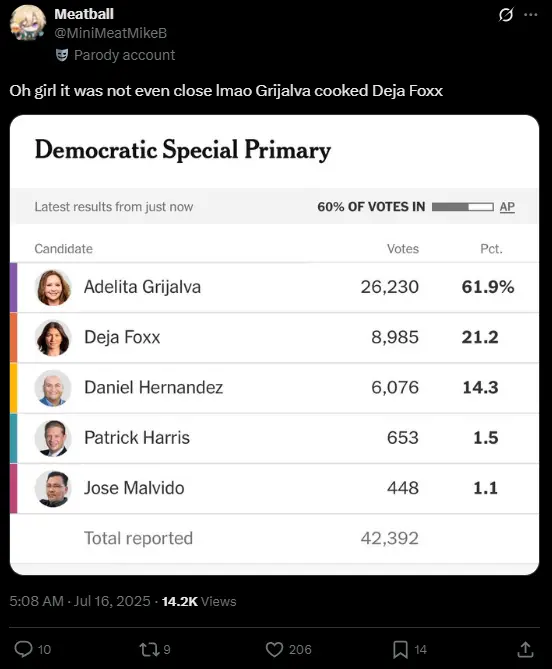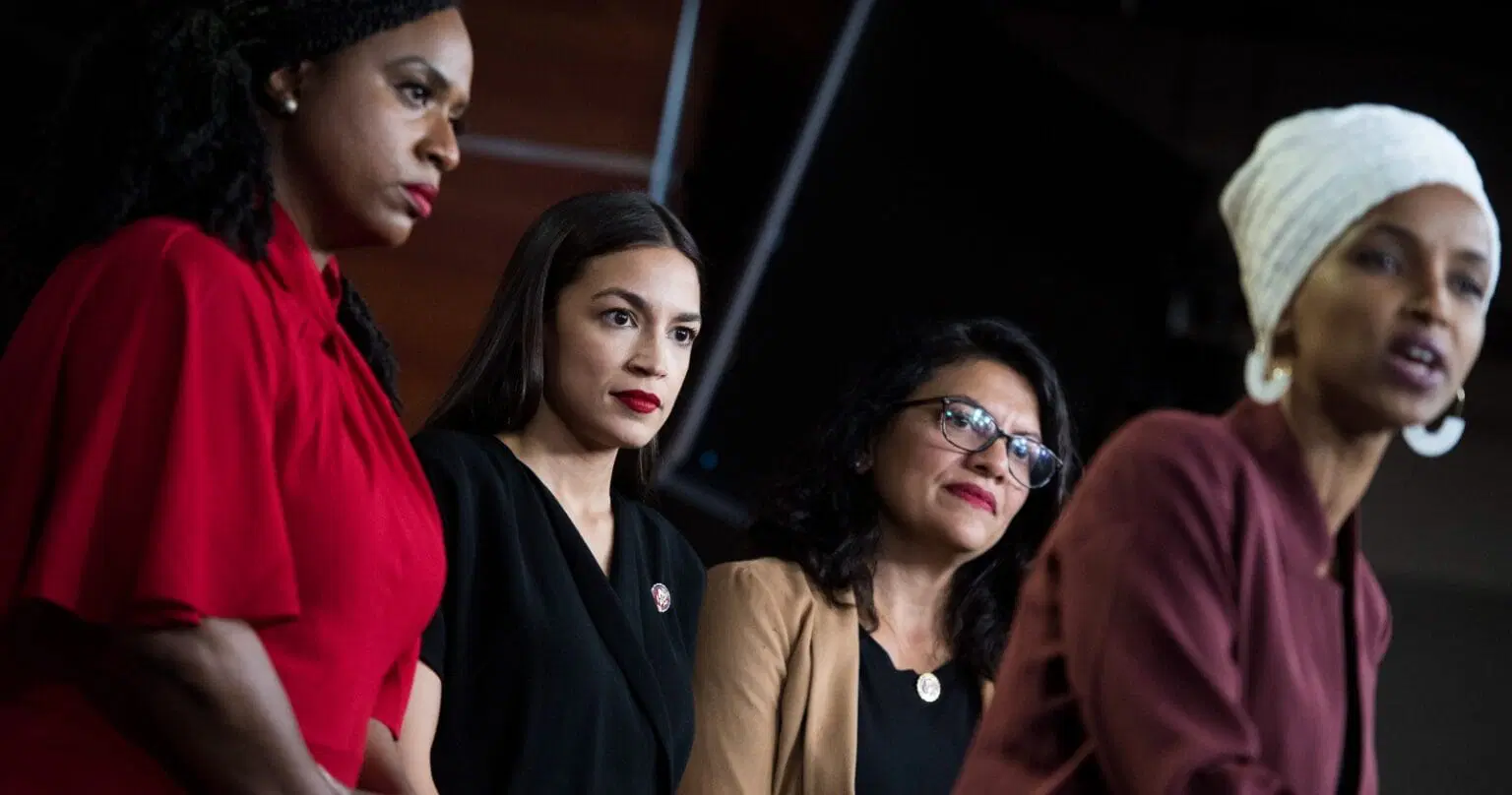The intersection of social media stardom and traditional politics took center stage this week as election results revealed a stark disconnect between online influence and voting booth reality. What unfolded serves as a compelling case study in the evolving landscape of American political campaigns and the enduring power of established political networks.
The Arizona Surprise That Wasn’t
In Arizona’s 7th Congressional District, the political establishment demonstrated its resilience against digital-age challengers in a race that captured national attention. The contest pitted traditional political lineage against modern social media influence, with results that surprised few seasoned political observers but shocked many online activists who had predicted a different outcome.
The race featured two distinctly different approaches to progressive politics. On one side stood a candidate representing decades of local political engagement, family legacy, and traditional campaign infrastructure. On the other, a young digital native who had built a substantial online following and sought to translate virtual influence into electoral success.
Adelita Grijalva, a 54-year-old Pima County Supervisor, secured a commanding victory with 62% of the vote when the Associated Press called the race with 65% of ballots counted. Her opponent, 25-year-old digital content creator Deja Foxx, managed just 21% of the vote despite her nearly 400,000 TikTok followers and significant social media presence.
The margin of victory—more than 40 percentage points—represented one of the most decisive outcomes in recent progressive primary contests. For political analysts, the result reinforced long-held beliefs about the differences between online engagement and actual voter turnout, particularly in down-ballot races where name recognition and local connections often prove decisive.
The Power of Political Legacy
Grijalva’s victory was built on a foundation that extends far beyond a single campaign cycle. As the daughter of the late Rep. Raúl Grijalva, she inherited not just a recognizable surname but also decades of political relationships, institutional knowledge, and deep community connections that proved invaluable in mobilizing voters.
The Grijalva family’s political roots in Southern Arizona stretch back more than five decades, creating a network of supporters, volunteers, and local leaders who viewed the congressional seat as a continuation of an established progressive tradition. This institutional advantage became apparent early in the campaign as endorsements from major progressive figures began flowing to Grijalva’s campaign.

Sen. Bernie Sanders, Rep. Alexandria Ocasio-Cortez, and Arizona Senators Mark Kelly and Ruben Gallego all threw their support behind Grijalva, providing not just symbolic endorsements but also access to donor networks, volunteer databases, and campaign expertise. These endorsements carried particular weight in a district where progressive politics has deep historical roots and where voters often prioritize candidates with proven track records of local engagement.
In her victory speech, Grijalva explicitly acknowledged this legacy while framing her win as a validation of long-term progressive organizing efforts. “This is a victory not for me, but for our community and the progressive movement my dad started in Southern Arizona more than 50 years ago,” she declared. “We delivered a message rooted not just in fighting back against a dangerous and tyrannical administration—but in fighting for something: for our democracy, for the dignity of working people, and for the values that truly define Southern Arizona.”
The Digital Campaign Experiment
Foxx’s campaign represented a fascinating experiment in translating social media influence into electoral success. At just 25 years old, she had built a substantial online following through content focused on progressive politics, social justice issues, and personal storytelling about her experiences growing up in challenging economic circumstances.
Her campaign narrative centered heavily on what she termed “lived experience”—a childhood spent in Section 8 housing, reliance on food stamps, and early activism around reproductive rights. This personal story resonated strongly with online audiences who appreciated authentic voices speaking about systemic inequalities and social justice issues.
The campaign raised over $670,000, primarily through small-dollar donations from supporters who discovered her through social media platforms. This grassroots fundraising success initially suggested that digital organizing might provide a viable path to electoral victory, particularly in an era when traditional campaign methods have faced increasing scrutiny.
Foxx’s team attempted to revolutionize field campaigning by leveraging social media platforms to reach voters directly, bypassing traditional media outlets and established political networks. The strategy involved creating viral content, engaging with followers through live streams and direct messages, and building what campaign officials described as a “movement” rather than a traditional political organization.
High-profile endorsements from gun control activist David Hogg and the political action committee “Leaders We Deserve” provided additional credibility and resources. These endorsements were particularly significant given the national attention surrounding young progressive activists and their potential to reshape Democratic politics.
The Reality Check
Despite the innovative approach and substantial online following, Foxx’s campaign encountered the harsh realities of electoral politics. The 40-point margin of defeat represented more than just a loss—it highlighted fundamental differences between online engagement and actual voting behavior.
Political scientists have long noted that social media followers don’t necessarily translate to votes, particularly in local races where traditional factors like name recognition, local endorsements, and community connections often prove more decisive. The Arizona race provided a stark example of this disconnect, with Foxx’s substantial digital presence failing to overcome Grijalva’s advantages in traditional political organizing.
The demographic composition of the district also played a crucial role. While younger voters might be more likely to engage with social media content, they represent a smaller portion of the electorate in many congressional districts. Older voters, who turn out at higher rates in primary elections, often rely more heavily on traditional information sources and established political networks when making voting decisions.
Local political observers noted that Grijalva’s decades of involvement in county government provided her with deep knowledge of constituent concerns and established relationships with community leaders across the district. This local expertise proved particularly valuable in debates and candidate forums where policy specifics and implementation details became important factors in voter decision-making.
Broader Implications for Progressive Politics
The Arizona results occurred against a backdrop of increasing tension within progressive political circles about strategy, messaging, and candidate selection. The outcome provided ammunition for different factions within the movement, with some arguing that the results validated traditional approaches to political organizing while others maintained that digital-first campaigns simply need more time and resources to mature.
The defeat also raised questions about the sustainability of social media-driven political movements and their ability to translate online enthusiasm into electoral success. While digital organizing has proven effective in raising money and building awareness, the Arizona race suggested that these tools might be insufficient for winning competitive elections without complementary traditional campaign infrastructure.
For younger progressive activists, the results represented a sobering reminder of the challenges facing candidates who lack traditional political credentials and established networks. The loss sparked extensive discussion on social media platforms about the relationship between online influence and electoral viability, with many questioning whether the current political system adequately rewards innovative campaign approaches.
The New York Progressive Challenge
The Arizona outcome has taken on additional significance in light of developments in New York, where progressive activists are considering primary challenges against several established Democratic members of Congress. The potential targets include House Minority Leader Hakeem Jeffries, representing one of the most ambitious progressive primary efforts in recent memory.
Zohran Mamdani, a 33-year-old democratic socialist assemblyman from Queens, has emerged as a central figure in these discussions following his decisive victory in New York City’s Democratic mayoral primary. His success has energized progressive activists who view his win as evidence that social media-driven campaigns can succeed when properly executed and sufficiently resourced.
The Democratic Socialists of America (DSA) has positioned Mamdani’s victory as part of a broader movement to challenge establishment Democrats across the country. “This movement is bigger than one person, election, city, or organization,” DSA officials stated following the mayoral primary. “We encourage all people inspired by the Zohran campaign to join their local DSA or YDSA chapter and get involved so we can continue to fight alongside Zohran and DSA elected officials across the country to create the future we all deserve.”
The organization is reportedly considering primary challenges against not only Jeffries but also Representatives Ritchie Torres, Jerry Nadler, Dan Goldman, and Yvette Clarke—all representing New York City districts with significant progressive constituencies.
The Establishment Response
Senior political advisors to targeted incumbents have begun preparing for potential primary challenges, with sources close to Jeffries’ team promising a “forceful and unrelenting” response to any attempts to unseat the House Minority Leader. This aggressive posture reflects the high stakes involved in these potential contests, which could reshape the Democratic Party’s leadership structure and future direction.
The response from establishment Democrats has been notably different from previous primary seasons, reflecting both the changing political landscape and the perceived threat posed by well-organized progressive challengers. Rather than dismissing potential opponents, incumbent campaigns are taking early steps to shore up support and prepare for competitive races.
This preparation includes strengthening relationships with local Democratic committees, labor unions, and community organizations that traditionally provide crucial support in primary elections. Incumbents are also focusing on fundraising efforts and building campaign infrastructure that can respond quickly to challenger announcements.
Platform Similarities and Voter Decisions
One of the most intriguing aspects of the Arizona race was the substantial overlap between the two candidates’ policy positions. Both Grijalva and Foxx supported Medicare for All, tribal sovereignty, environmental justice initiatives, and opposition to Donald Trump’s political agenda. This similarity in platform positions highlighted the importance of factors beyond policy when voters make electoral decisions.
The policy overlap suggested that the race was decided more by considerations of experience, electability, and local connections than by ideological differences. Voters appeared to prioritize candidates they viewed as most likely to effectively represent their interests in Congress, with Grijalva’s established track record in local government providing a significant advantage.
This dynamic reflects broader trends in Democratic primary elections, where policy differences between candidates have often narrowed while questions of experience, electability, and representation have become more prominent. The Arizona results suggest that progressive voters, like their counterparts across the political spectrum, continue to value practical considerations alongside ideological alignment.
Lessons for Future Digital Campaigns
Despite the disappointing outcome, Foxx’s campaign provided valuable insights into the potential and limitations of digital-first political organizing. The campaign’s success in raising substantial funds through small-dollar donations demonstrated the continued viability of grassroots fundraising, even for candidates without traditional political credentials.
The social media engagement generated by the campaign also highlighted the potential for digital platforms to build awareness and enthusiasm around political causes and candidates. While this enthusiasm didn’t translate directly to votes in the Arizona race, it provided a foundation for future political engagement and activism.
Campaign strategists analyzing the results have noted that digital-first campaigns might be more effective in districts with younger demographics or in races where traditional political networks are less established. The Arizona district’s particular characteristics—including its political history and demographic composition—may have created especially challenging conditions for a non-traditional candidate.
The Future of Progressive Politics
The Arizona election results have sparked extensive debate about the future direction of progressive politics in America. Some activists have interpreted the outcome as evidence that the movement needs to focus more heavily on building traditional political infrastructure and developing candidates with established credentials and local connections.
Others have argued that the results reflect the need for more time and resources to develop effective digital-first campaign strategies. They point to successful examples of social media-driven political movements in other countries and suggest that American progressive politics is still in the early stages of adapting to digital campaigning methods.
The tension between these perspectives reflects broader questions about political strategy, candidate development, and the relationship between online activism and electoral success. As progressive movements continue to evolve, the lessons from Arizona will likely influence future campaign strategies and candidate selection processes.
The outcome also raises questions about the role of political dynasties and established networks in democratic politics. While Grijalva’s victory demonstrated the continued importance of traditional political credentials, it also highlighted ongoing debates about representation, accessibility, and the barriers facing candidates from non-traditional backgrounds.
As the political landscape continues to evolve, the Arizona race will likely be remembered as a significant moment in the ongoing conversation about the future of progressive politics, the role of social media in campaigns, and the enduring importance of local political organizing in American democracy.

Adrian Hawthorne is a celebrated author and dedicated archivist who finds inspiration in the hidden stories of the past. Educated at Oxford, he now works at the National Archives, where preserving history fuels his evocative writing. Balancing archival precision with creative storytelling, Adrian founded the Hawthorne Institute of Literary Arts to mentor emerging writers and honor the timeless art of narrative.
